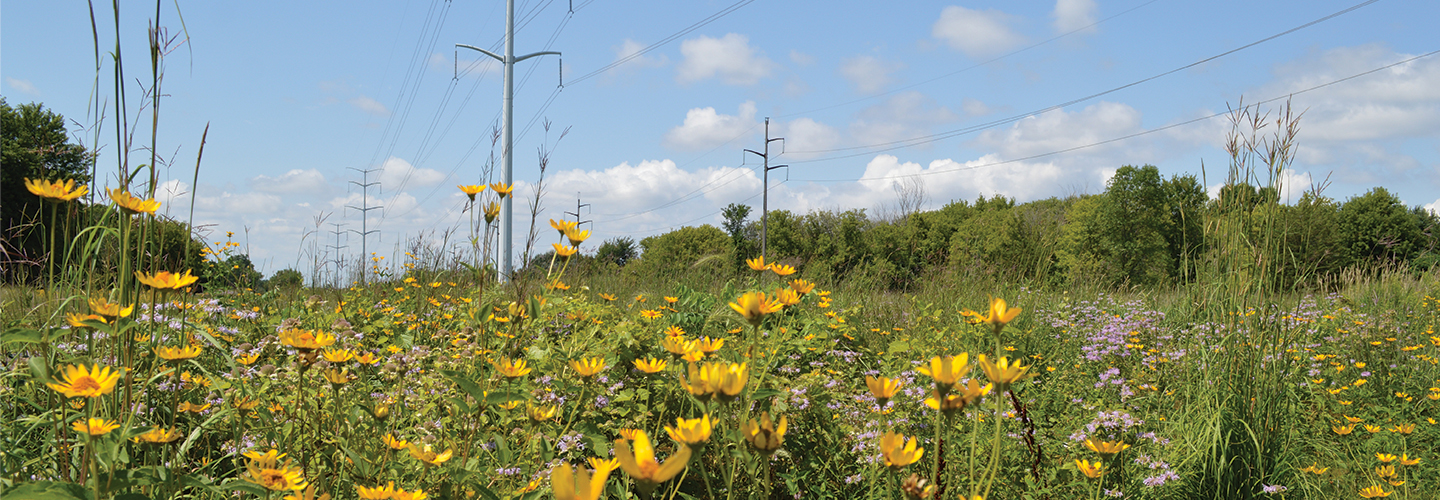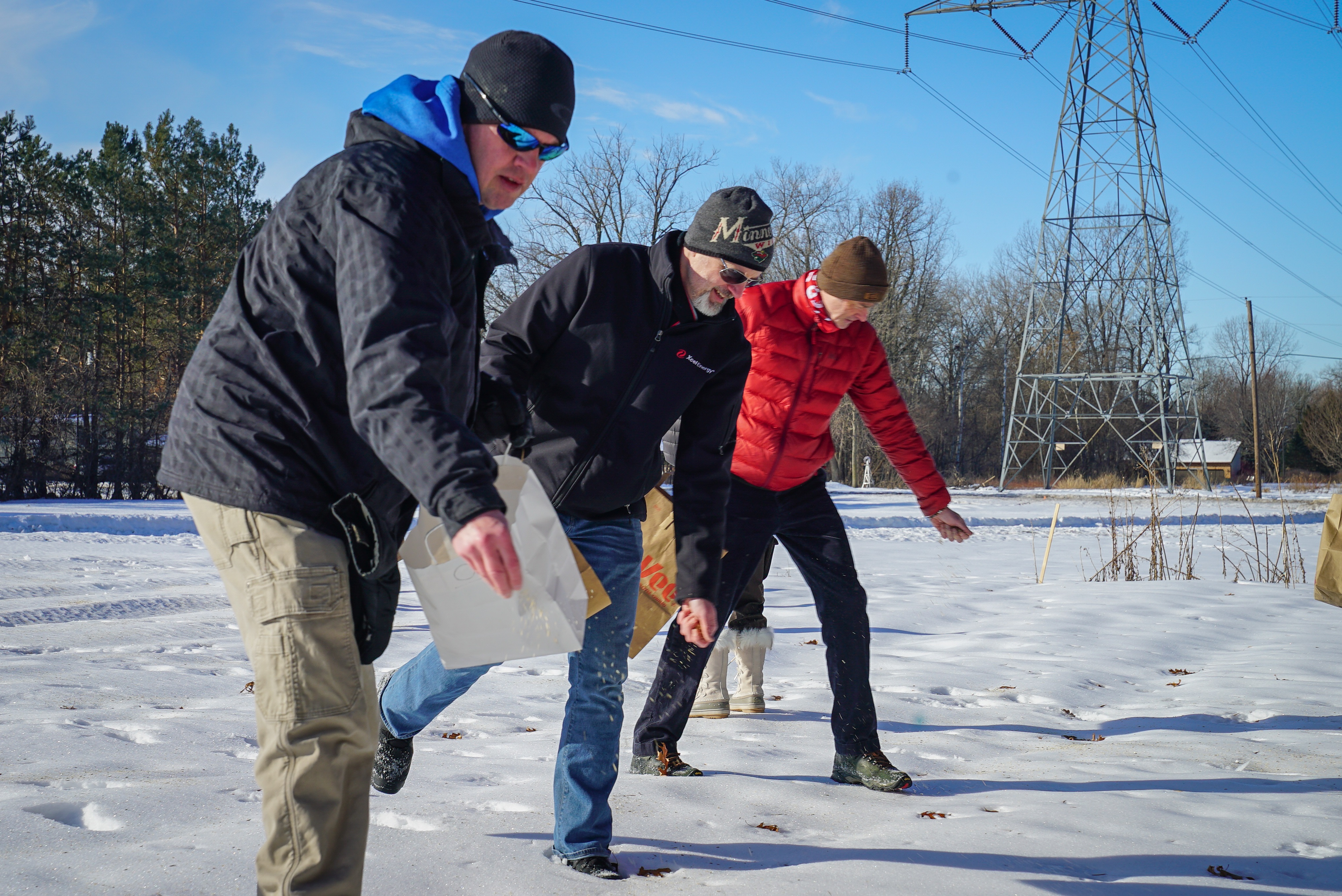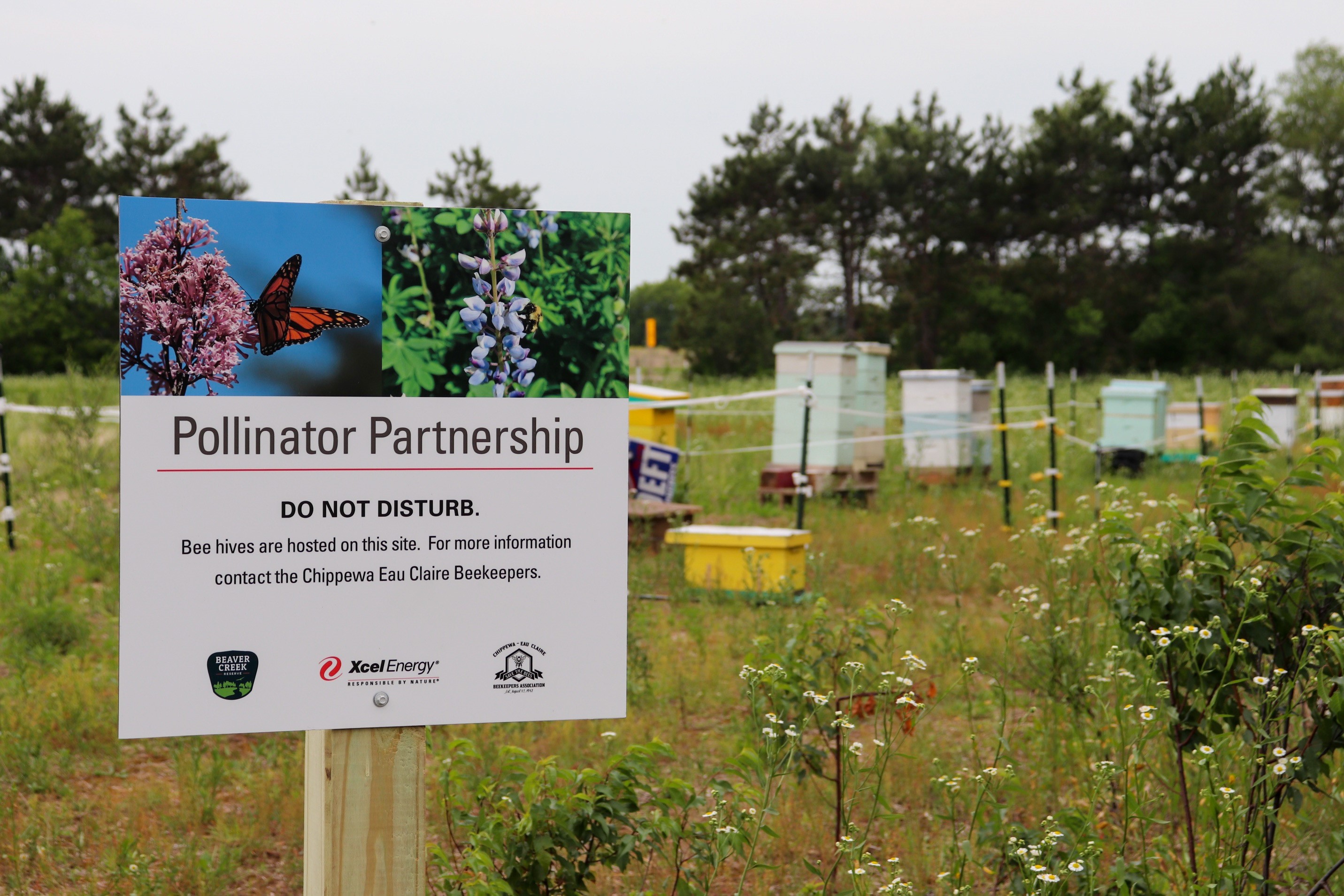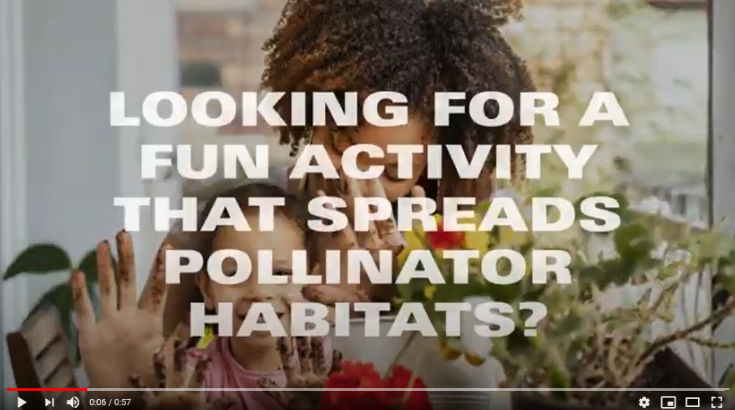Creating a buzz to empower pollinators
Developing sustainable native landscapes benefits nature while reducing maintenance

It’s National Pollinator Week, and there’s never been a better time to get outside and help the creatures we need. About one-third of our crops and 90% of wildflower plants rely on pollinators like bees, butterflies, birds and bats.
Xcel Energy has more than 2,100 acres of pollinator habitat on various company property at 44 sites including under transmission lines, around substations, community solar gardens, a wind project and company office sites.
The initiative is growing with plans to expand several habitat corridors including a site in Mendota Heights, Minnesota this year.

In February, about a dozen Xcel Energy volunteers were joined by partners from the U.S. Fish & Wildlife Service and the City of Little Canada, Minnesota to spread wildflower seed over 2 acres of land under transmission lines in the city.

We’ve also partnered with the Chippewa Valley Bee Keepers Association to allow community beehives outside the Gravel Island Substation in Eau Claire, Wisconsin.
“As we expand to new sites, we are looking to the future, and setting goals for how we can really create sustainable native landscaping on more company property,” said Pam Rasmussen, Xcel Energy senior siting and land rights manager. “The environmental benefits are huge, and we can cut costs by reducing maintenance.”
Efforts to empower pollinators are featured in the recently issued Corporate Responsibility Report.
Get involved
Looking for an activity for the whole family? We’ve created a tutorial on how to create pollinator seed balls – learn how here.
There are lots of ways you can help pollinators in your own yard, here are a few tips.



